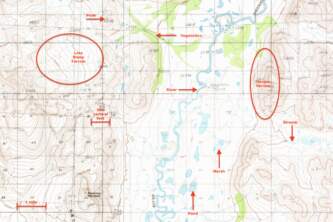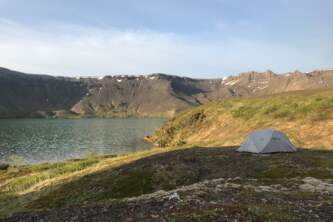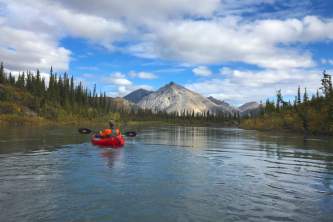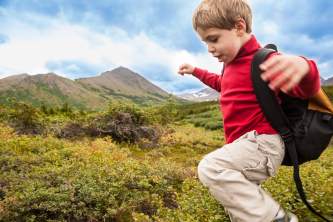Tips For Your First Alaskan Backpacking Trip
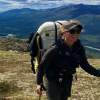
By Haley Johnston
Wilderness Guide, writer, backcountry enthusiast
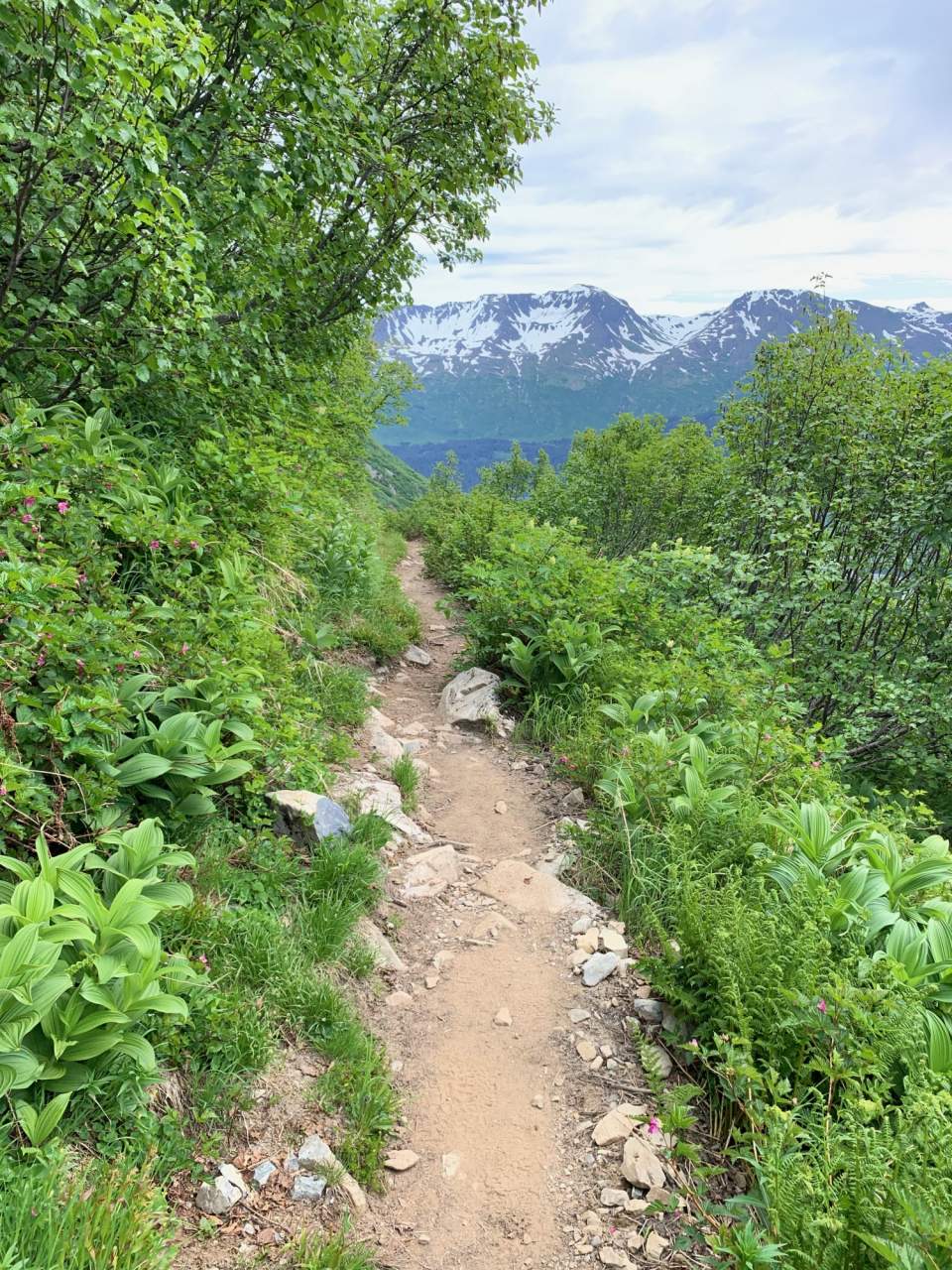
Trails are few and far between in Alaska - enjoy them when you have them! (photo courtesy of Haley Johnston)
Few, if any, backpacking trips in Alaska are suitable for a true novice who has never backpacked before. If you're interested in backpacking through Alaska, get out for at least a couple trips closer to home. This will help you increase your fitness, practice your backcountry skills, and give you experience with equipment. Then, when you're ready to tackle an Alaskan backpacking trip, know that the hard part will be choosing which trip to do! There are literally hundreds to choose from. Our backcountry trip selection matrix will help you pick out the trip that's right for you.
Before your first Alaskan backpacking trip, familiarize yourself with a few key concepts. If you're uncomfortable with any of these, consider hiring a guide or getting more experience.
Off-trail Travel
Many backpacking trips in Alaska require off-trail travel for a portion or the entirety of a route. Sometimes, off-trail travel means following a well-worn caribou path that resembles a single-track mountain bike trail; other times, it means hiking on lumpy bumps in the tundra (called tussocks) that are best approximated by walking over a pile of wet mattresses.
Off-trail travel is slower. If the trip you pick involves extensive off-trail travel, expect to move half as fast as you normally would. If you typically travel two miles per hour on a trail, expect to move one mile per hour off of one. Factor this into your calculations for how much distance you will cover each day.
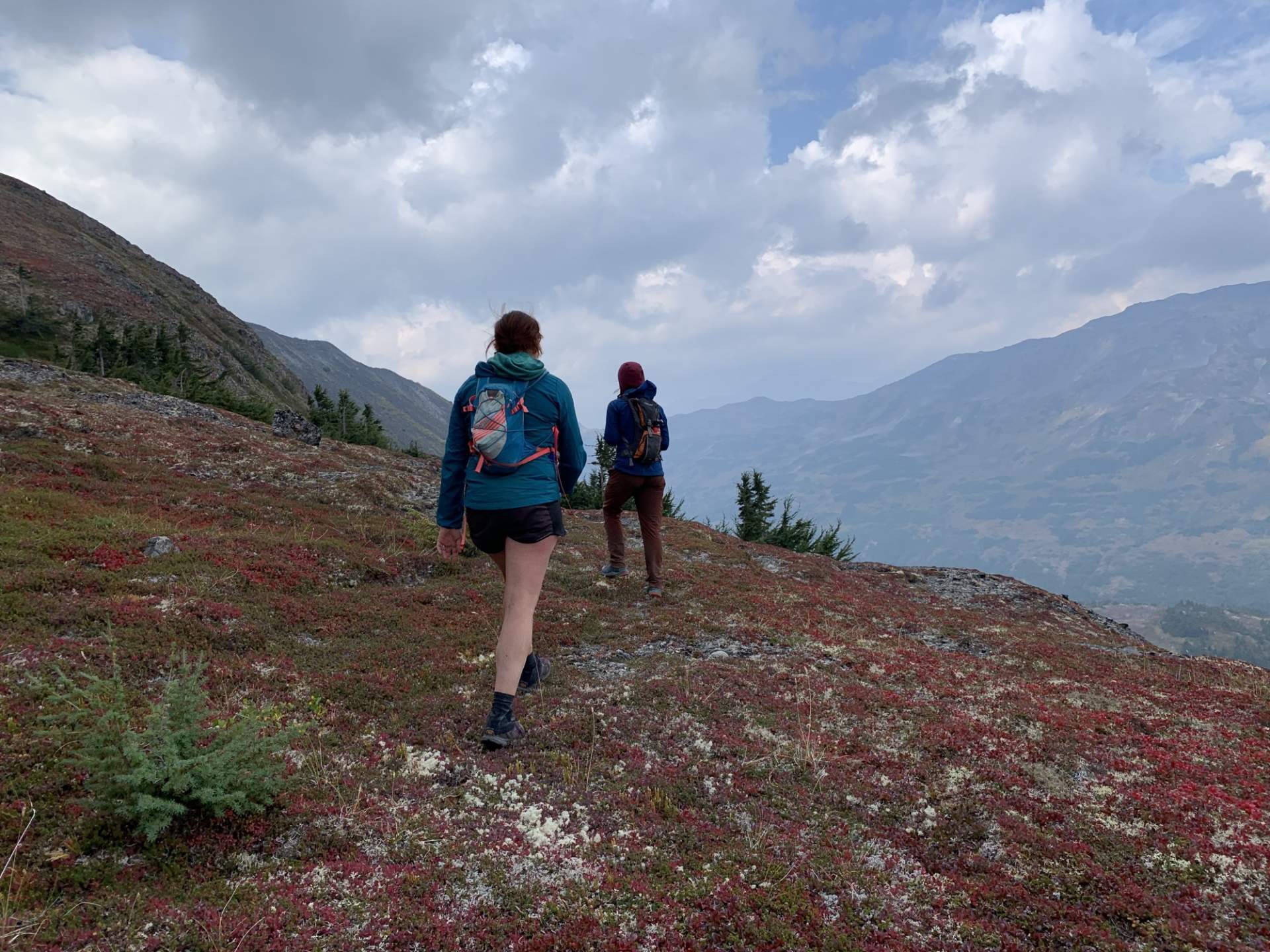
Hikers walk across alpine tundra in the fall. (photo courtesy of Haley Johnston)
Off-trail travel is more physically taxing. You may be sore in places you wouldn't normally be from walking on a trail. Your body's smaller stabilizer muscles will be working hard to keep your balance on the backcountry's uneven surfaces. Your feet may move around in your shoes/boots differently than they would on-trail. Pay attention to any hot spots that develop on your feet and stop early to address them.
Off-trail travel requires much more thought than moving on a trail. Every step off-trail is a choice, and you won't be able to hike on "auto-pilot." Paying attention to your footing will help you avoid twisted ankles and tweaked knees.
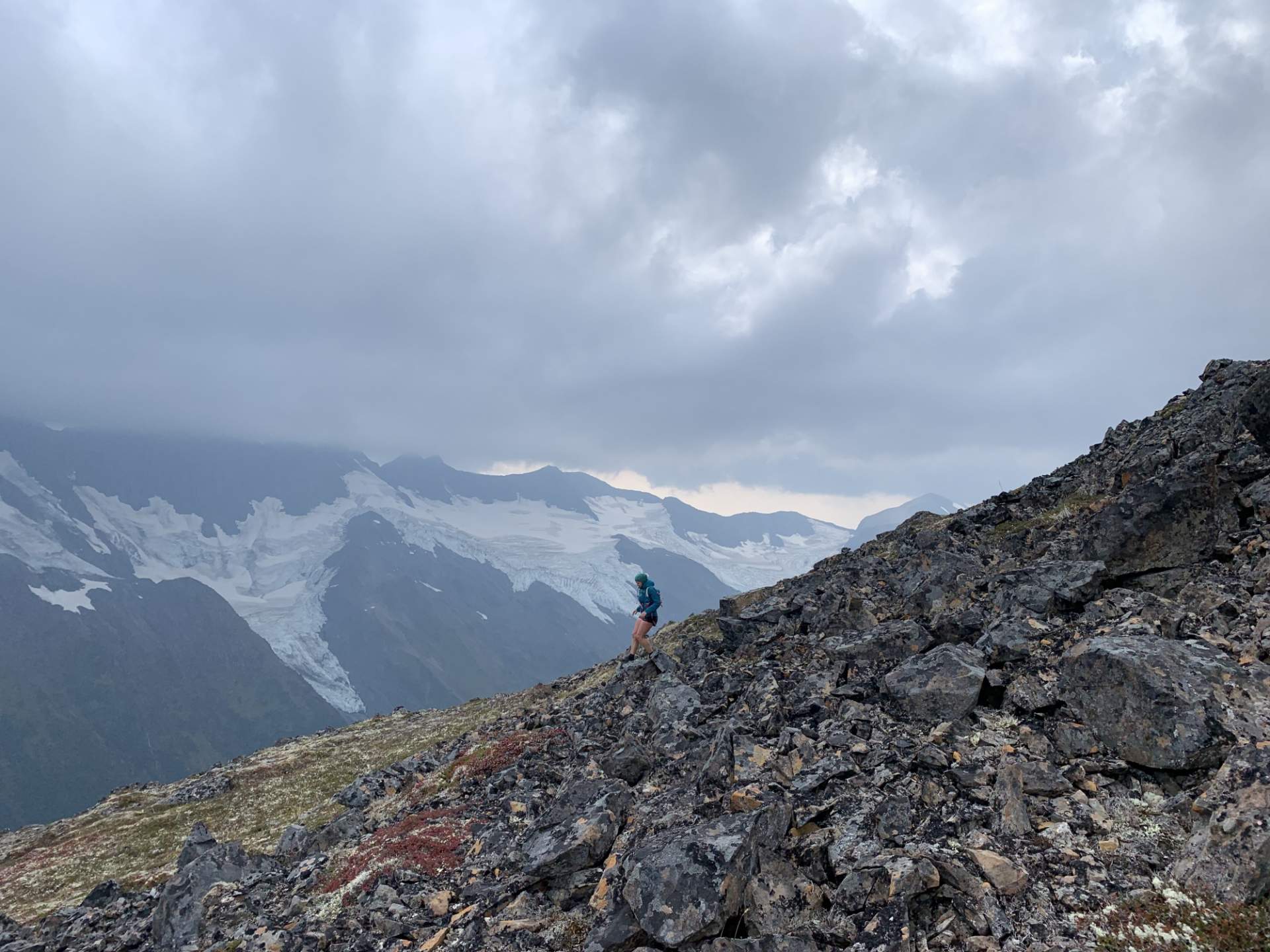
A hiker navigates scree and talus, terrain that requires a high level of concentration. (photo courtesy of Haley Johnston)
Backcountry First-Aid
Bring a first-aid kit with you. Make sure you know what's in the kit and how to use it. The size and scope of what you carry will be dictated by the number of people in your group and the remoteness of your trip. Pre-made kits are available from most outdoor stores, but more experienced travelers often create their own kits based on their individual needs.
A basic fist-aid kit should include nitrile gloves, a small CPR face mask, a mix of medications (ibuprofen, acetaminophen, aspirin, and an antihistamine), wound-care supplies (gauze, fabric tape) and supplies to manage cuts and scrapes (small bandages, antiseptic wipes, and antibiotic ointment).
If you're prescribed any life-saving medication (i.e. aspirin, inhaler or epi-pen) make sure your tripmates know where you keep it and how to help you administer it in an emergency. If you're on any medication or supplements, carry enough for your entire trip plus an extra day or two, in case you're moving at a slower pace than anticipated or your plane can't reach you due to poor weather.
Water Purification
Most locations in Alaska have copious amounts of water. While some people occasionally drink directly from fast-moving, clear, alpine streams, it's always a good idea to filter or treat your water when in the backcountry.
There are many options for making water safe to consume. Pick one of these four options:
- Bring water to a rolling boil for a full minute (This requires carrying and using more fuel.)
- Use a filter, either gravity or pump-style, before consuming water. Filters become easily clogged when dealing with glacial water. If you must filter and use glacial water, try to let it sit first to allow the silt to settle to the bottom, then skim the clearer water off the top.
- Expose water to an ultraviolet light purifier. Katadyn and Steripen are both brands that make good options. This method requires batteries to operate, so bring enough to power the light for your whole trip.
- Treat your water with chemicals, either chlorine or iodine. Chemicals do negatively affect the taste of the water.
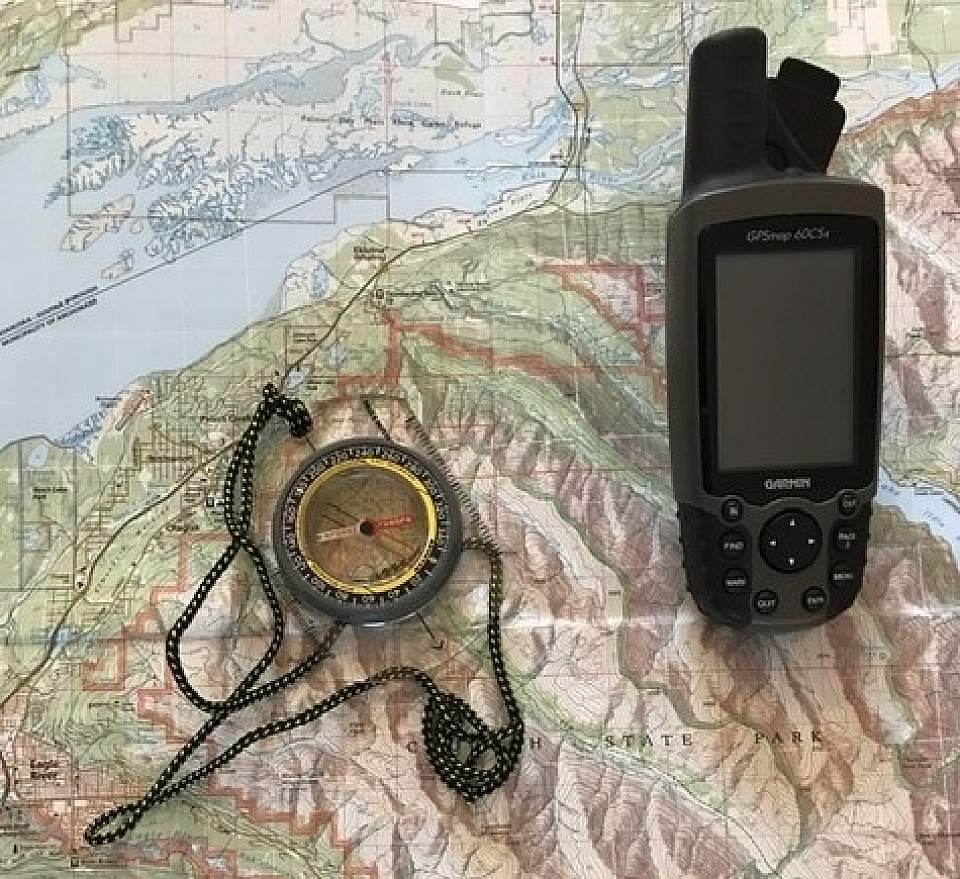
Before your trip practice navigating with a topographic map and compass and/or GPS
Backcountry Navigation
Take time before your trip to learn and practice navigating with a topographic map and compass and/or GPS. The more off-trail travel you plan to encounter on your route, the better your backcountry navigation skills will need to be. See our Backcountry Navigation page for more information.
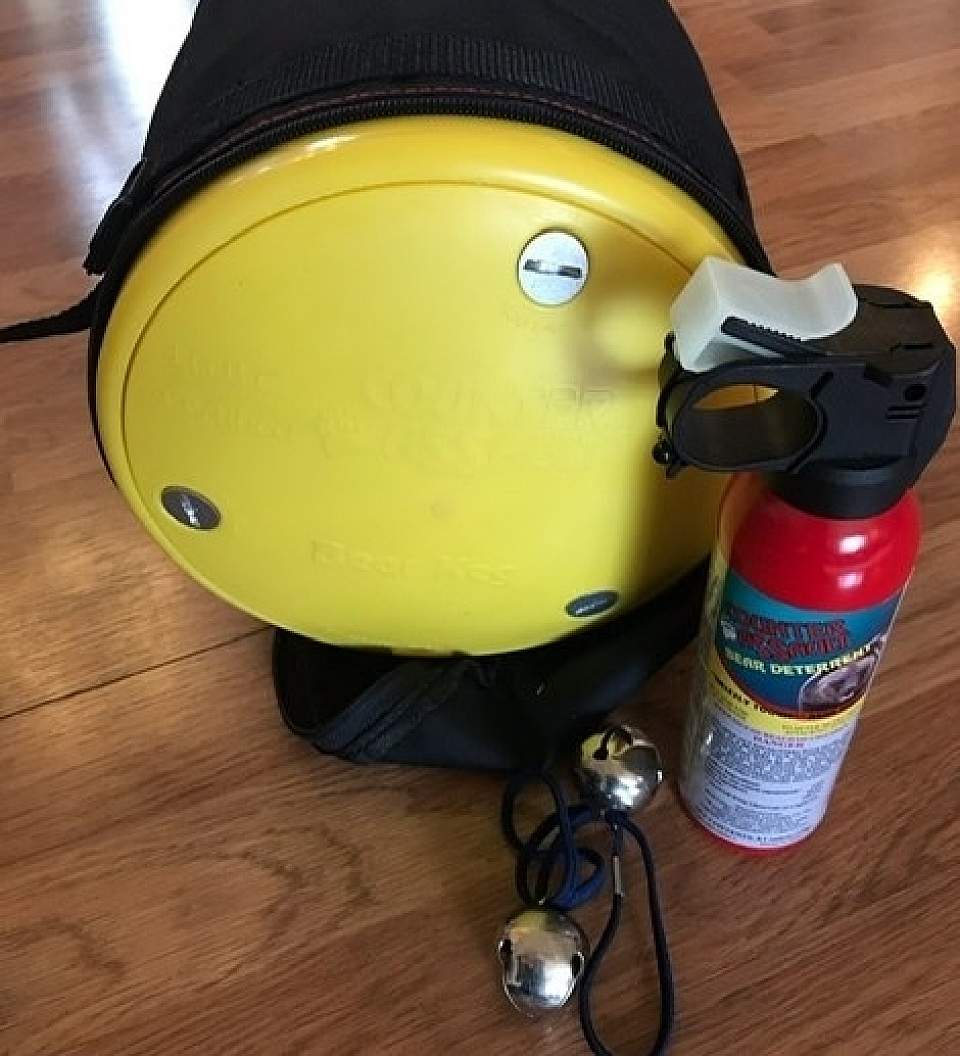
BRFC, bear spray, and bells can generally be purchased at most sporting goods stores
Traveling in Bear Country
Nearly all of Alaska - with the exception of the far southwest Aleutian Islands - is bear country. Most routes will travel through brown bear or black bear territory, or both! (Few trips, besides the most remote arctic trips, travel through polar bear country.) For tips on hiking and camping in bear country, see our Traveling in Bear Country page.
It is a good idea to carry and store your food in a bear-resistant food container (BRFC); in some locations, BRFC's are required. Always carry a bear deterrent and know how to use it. But remember that knowledge of bear behavior and following recommended guidelines is the best bear deterrent there is!
Equipment
There's no "perfect" backpacking gear list, though we do think our list is pretty darn close. What is a backcountry necessity to one person may seem like unnecessary luxury to another. The most important thing is to have equipment that you're comfortable using and fits you well. Balance the desire to have a light backpack with the need to being along items for safety and comfort. A few specific things to think about before your first Alaskan trip:
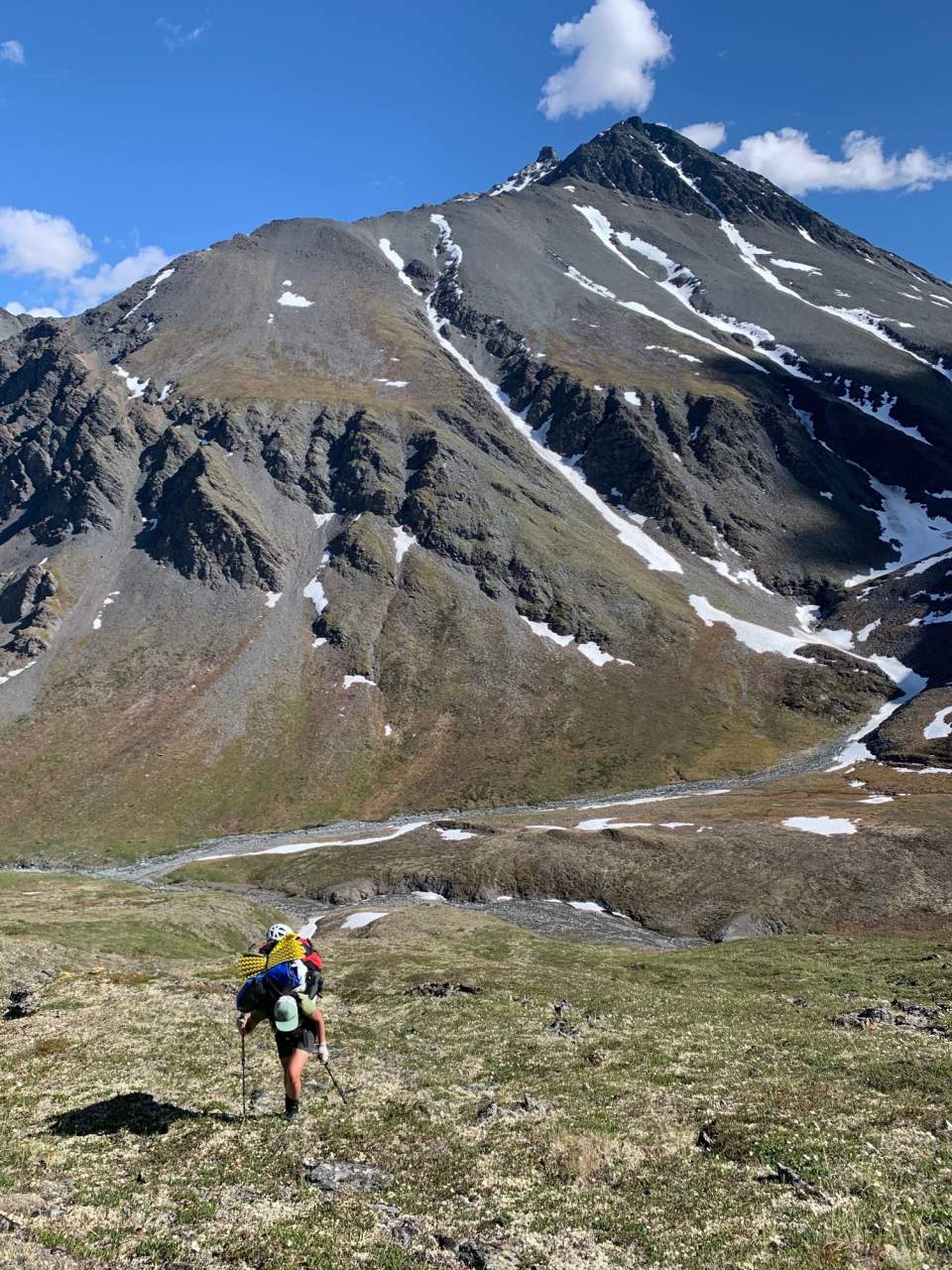
A hiker uses trekking poles on a steep climb. (photo courtesy of Haley Johnston)
Use a well-fitting backpack
You may even want to visit a gear store and get a professional fit. A well-fitting backpack means you carry most of the weight on your waist belt and not on your shoulders. The weight should sit close to your spine and move with you, instead or rocking back and forth independently.
Consider trekking poles
Trekking poles are especially useful in Alaska. They'll help you keep your balance on uneven off-trail travel, take some of the load off your leg muscles and knees on steep climbs and descents, and help you cross rivers and streams safely. The heavier your combined body and pack weight, the sturdier your poles should be. Ultra-lightweight poles are not appropriate for a 200-pound person carrying an 80-pound pack, for example. Likewise a small person with a light pack does not need the sturdiest poles, and that extra weight may be bothersome.
Bring a stove
Never depend on a fire for your cooking needs. Few backpacking destinations in Alaska have enough wood to properly cook over a fire. In the alpine, fires are rarely allowed because of their impact on fragile tundra plants, plus wood is nearly impossible to find. Even below treeline, wood is often so wet that ti's difficult to light a fire. Instead, invest in a lightweight backcountry stove. These are smaller than a softball and lightweight. The brands MSR, Jetboil, and Snowpeak all make durable, dependable stoves. Practice connecting your stove to its fuel source, igniting, adjusting, and extinguishing your stove at home before your trip. This will ensure you know how your stove functions and that you have the appropriate fuel type, bottles/canisters, and adapters for your stove.
Practice setting up your tent
A windy rainstorm on night one of your trip is not the time to learn how your tent poles integrate with your rainfly. The faster you can set up your tent, the drier you and your stuff will be. Our Backcountry Campsites page has tips for selecting and setting up a good backcountry campsite.
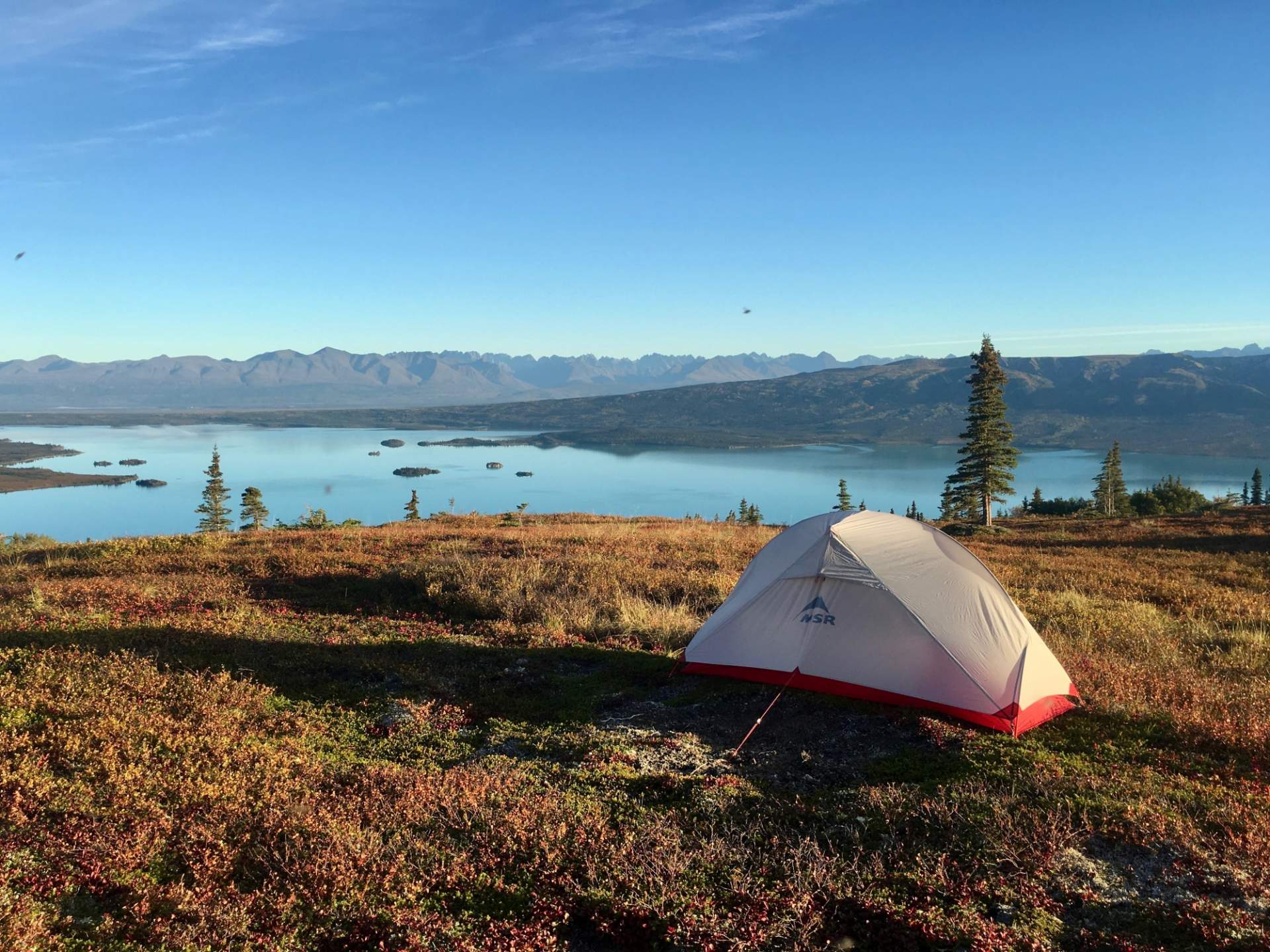
A well made and well pitched tent will keep you safe, warm and dry no matter the weather. (photo courtesy of Haley Johnston)

